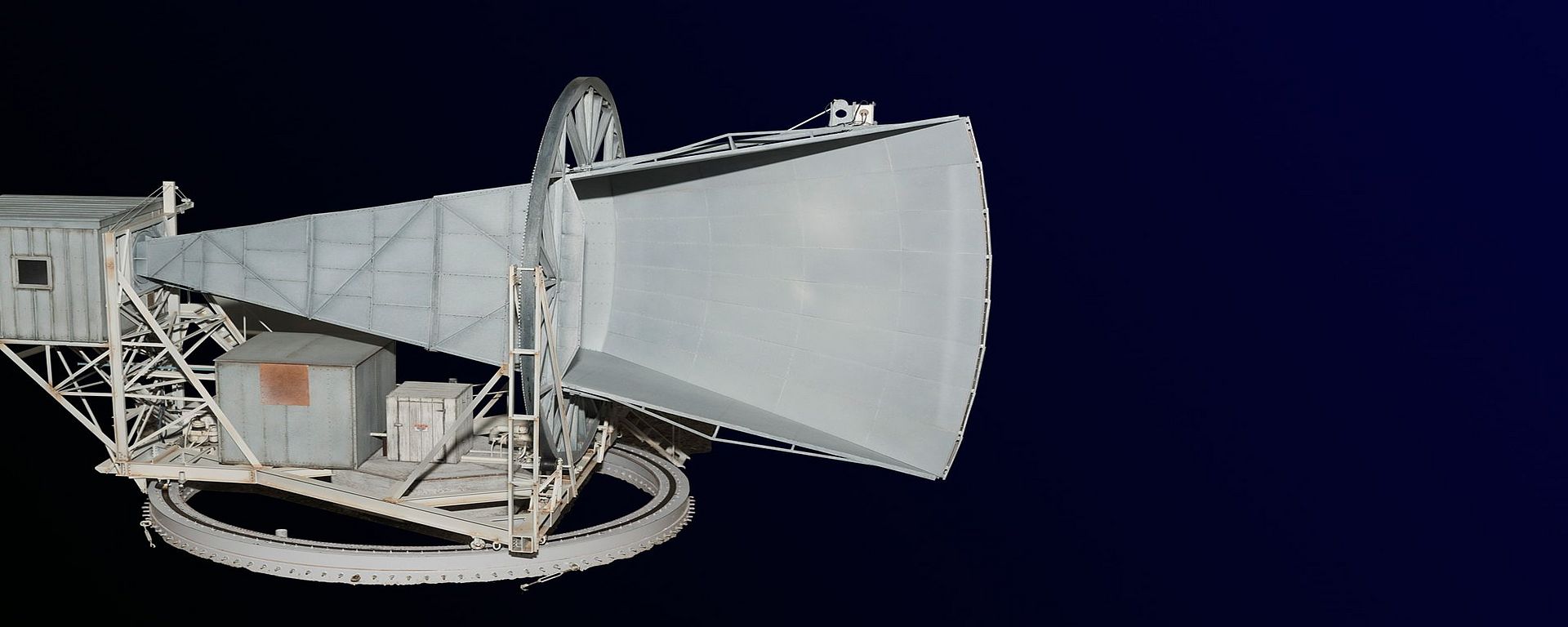
Photo: Deutsches Museum
Astronomy
Cosmic Background Radiation – the Afterglow of the Big Bang
With a horn antenna as a receiver for cosmic microwave radiation, Arno Penzias and Robert Wilson discovered the afterglow of the Big Bang in 1964.
Cosmic Background Radiation
Apparatus for receiving and amplifying cosmic microwave radiation. Photo: Deutsches Museum | Christian Illing
With this measuring apparatus, which is connected to a horn antenna, Arno Penzias and Robert Wilson managed to provide evidence of cosmic microwave background radiation in 1964.
The discovery was a breakthrough for the “Big Bang model”. This model suggests that 13.7 billion years ago, everything in the visible universe today was smaller than a tennis ball.
The space then expanded, and during this expansion, the hot temperature radiation that filled the early cosmos cooled down. Today, we can pick this up as microwave radiation with a radiation temperature of 2.7 K (2.7°C above the absolute zero of -273°C).
With their horn antenna, Penzias and Wilson were able to separate the weak, even signal of the microwave background radiation of the cosmos from interference from other, stronger microwave signals. In 1978, they received the Nobel Prize for Physics for this radioastronomical feat.
1964Penzias and Wilson find evidence of the existence of cosmic background radiation.
1978Penzias and Wilson receive the Nobel Prize for physics.
